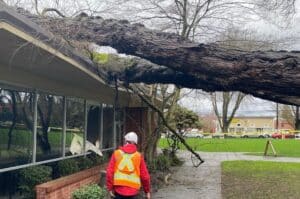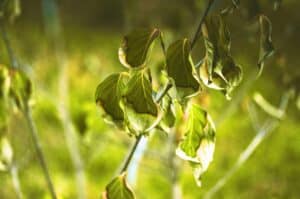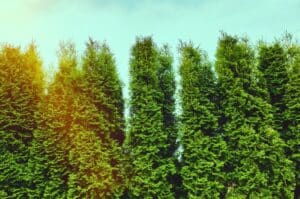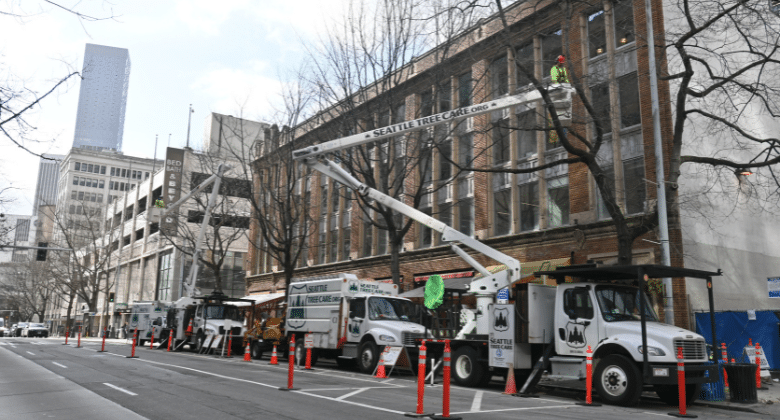Why Fall Is the Best Time to Plant New Trees in Seattle
Fall is Seattle's best tree planting season. Learn why timing matters, which trees thrive in our climate, and how to avoid costly planting mistakes.
Planting a new tree is one of the smartest investments you can make in your Seattle property. A well-placed tree can boost your home’s value by up to 15% while giving you decades of shade, beauty, and lower energy bills.
Like any good investment, timing matters – and fall gives Seattle homeowners the best chance of success. The cool, wet weather from September through November creates perfect conditions for young trees to thrive while keeping the required maintenance to a minimum. Let’s jump into a few good reasons why you should save your planting until autumn.
Key Takeaways:
- Fall’s natural rainfall and cooler temperatures help trees establish strong roots.
- Plant between mid-September and early November for best results.
- Native trees often require less care and tend to thrive in our challenging conditions compared to non-native species.
- Proper planning early on, such as the location of your new tree, can prevent expensive problems as trees mature.
Why Timing Your Tree Planting Matters
Every year, Seattle homeowners lose money on trees that fail. And one of the main reasons this happens is because they were planted at the wrong time.
Certain seasons can cause a lot of stress to trees. And without a robust root system in place, this stress can put trees at risk or cause them to fail completely. The only way to help newly planted tree survive during times of stress is to provide constant care.
But more often than not, the tree will die, forcing you to start over. While trees might look tough, they’re actually quite sensitive during their first year after planting. Good timing can mean the difference between a healthy tree that adds value to your property for decades to come and a frustrating mistake after just a few weeks or months.
Planting a new tree at the wrong time can lead to:
- More time and money spent watering
- Sickly looking trees that struggle to grow
- Stressed trees that attract pests and diseases
- A high failure rate, resulting in wasted time and money
Think of tree planting like building a house – you need a strong foundation. Just as you wouldn’t pour concrete in a rainstorm, you shouldn’t plant trees when weather conditions will stress them. Your tree needs those first few months to grow strong roots. Fall planting lets trees focus on root growth before spring arrives, setting them up for a healthy life with less effort from you.
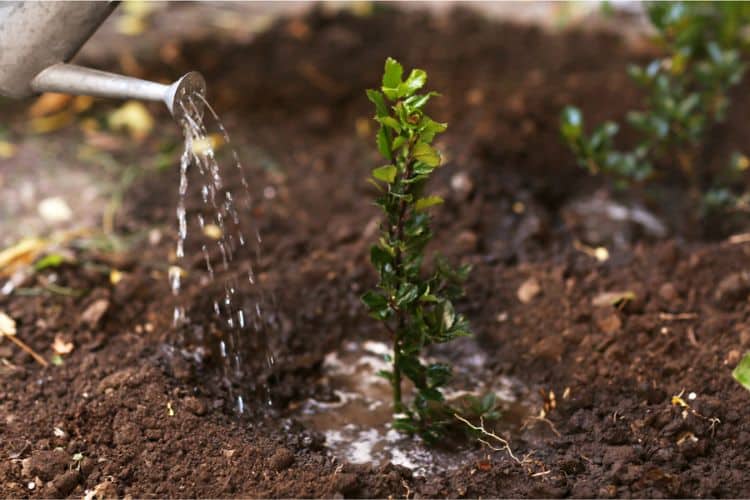
Why Seattle’s Fall Weather Is Perfect for Planting
Everyone in Seattle loves the fall. And that includes trees. Fall in Seattle gives young trees everything they need to get a strong start.
As summer heat fades, the soil stays warm enough for healthy root growth while cooler air lowers stress on trees. Our regular fall rains water your trees naturally – saving you time and money while giving trees exactly what they need.
What makes fall perfect for planting:
- Warm soil (50-65°F) is perfect for root growth
- Just enough natural rain without excess that might come in winter or spring
- Mild days prevent leaf damage
- Cool nights help trees hold onto moisture
- Fewer pests and diseases around as the temperatures start to dip
- Less competition for moisture and nutrients from weeds and grass
The best time to plant is between mid-September and early November. This gives your tree about 4-6 weeks to grow roots before frost arrives, while making the most of fall rains.
Trees planted during this time have the easiest transition to their new home than those planted in other seasons. Less stress means better growth and a stronger tree that can thrive for decades.
When Not to Plant Trees in Seattle
Of course, you can technically plant trees year-round. Sometimes with success. But in general, if you wish to avoid costly mistakes and wasted effort, it’s best to avoid planting during these times:
Summer Planting Problems:
- Hot weather and frequent drought stresses trees before they can grow roots
- You’ll need to water new trees daily
- High temperatures and direct sun can damage young roots
- Pests and diseases run rampant at this time, preying on stressed trees
Winter isn’t much better, even though Seattle winters are milder than other places. Our wet, cold weather can cause serious issues for newly planted trees:
Winter Challenges:
- Too much rainfall can kill brand-new trees and
- Too much moisture can lead to root rot
- Cold weather stops roots from growing
- Strong storms can damage young trees that don’t have strong enough root systems
Spring Planting
If fall is the best time to plant, then spring is the second-best season. The mild weather can work, but it comes with trade-offs. Warmer days and more sunlight make leaves and branches grow quickly. But this fast growth up top can stress a tree that hasn’t grown strong roots yet.
Plus, trees planted in spring face their first summer without deep roots, meaning you’ll need to water more during the driest months.
While many property owners like to get out and plant in the spring, after getting through another long, cold winter, fall is definitely a better option, to give your trees the longest time to develop healthy roots before the stress of summer heat and drought.
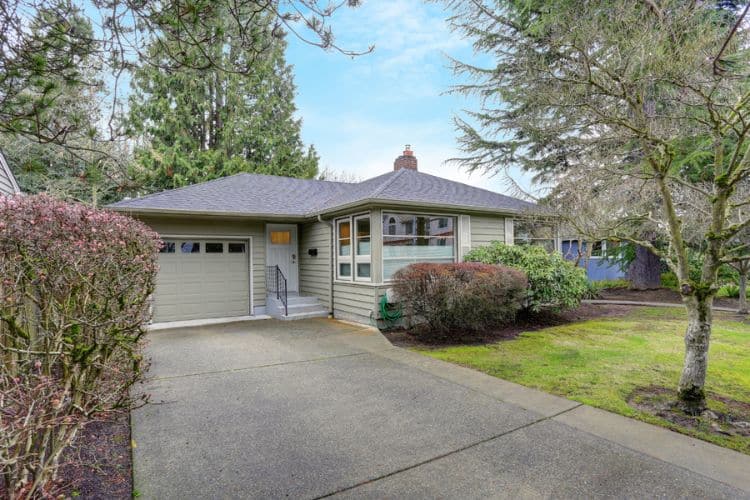
Best Trees for Seattle Properties
If you want to increase your chances of success even more, native trees are usually your best bet for a Seattle yard. These trees naturally thrive in our climate and soil, fight off local pests and diseases better, and provide homes for local wildlife. They also need less maintenance than non-native trees (though there are some excellent non-native species that thrive here as well).
Best Native Trees for Your Yard:
- Western Red Cedar – Great for privacy, grows 50-70 feet tall
- Big Leaf Maple – Gives lots of shade and bright fall colors, reaches 40-60 feet
- Pacific Dogwood – Beautiful spring flowers, stays smaller at 20-30 feet
- Shore Pine – Perfect evergreen for small yards, grows 25-35 feet
- Vine Maple – Does well in shady spots, stays compact at 15-25 feet
Smart Planting Tips:
Before you pick your tree, think about how big it will get when fully grown. A tree that grows too large for its space can damage your home, cause problems with power lines, or may require premature removal before you know it. Where you plant your tree matters just as much as which type you choose.
- Keep large trees at least 20 feet from your house
- Plant trees 10 feet away or more from underground utilities
- Think about how wide the tree will grow when planting near property lines
- Skip tall trees under power lines – plant shrubs or gardens under power lines instead
- Plant shade trees on your home’s south and west sides to maximize cooling potential and minimize AC expenses in the summer
- Create better privacy screens and more interesting landscapes by staggering trees instead of planting them in a straight line
How to Prepare Your Yard for Tree Planting
A good start helps your tree live longer. Before you plant, you need to prepare your yard so your new tree won’t have to compete with old roots or debris that could slow its growth.
Getting Your Yard Ready:
- Remove trees that are dead, dying, or otherwise unwanted
- Get rid of old stumps and large surface roots
- Clear away weeds and grass
- Check drainage by digging a hole and filling it with water
- Call 811 to mark underground utilities before you dig
- Make your planting area three times wider than the tree’s root ball
Common Tree Planting Mistakes to Avoid
Even with good timing and preparation, simple mistakes can hurt your tree’s chances of survival. Here’s what to watch out for:
- Planting Too Deep: Covering the root flare (where the trunk meets the roots) stops your tree from getting enough air and can cause root rot.
- Mulch Volcanos: Piling mulch against the trunk traps moisture and invites pests and diseases to damage your tree.
- Not Prepping the Root Ball: Leaving burlap or wire baskets around the roots can strangle your tree as it grows. You also want to loosen the roots to allow them to encourage them to grow outward into the new soil.
- Light Watering: Shallow watering forces roots to stay near the surface, making your tree weak and likely to suffer in dry weather. Water deeply and less frequently.
- Planting Too Close: Trees planted too close to homes, driveways, or landscape features may eventually cause damage or require constant maintenance.
- Forgetting Future Size: Not thinking about how big your tree will get leads to conflicts with buildings, power lines, and neighbors.
FAQs About Fall Tree Planting
Is there a way to get trees for free?
Actually, yes there is! Trees for Neighborhoods has provided over 14,000 free trees to homes across Seattle since 2009. They also offer planting assistance and other materials. But these are street trees, and must be planted next to the road. You can apply online.
How often should I water my new tree?
Aim to water your trees deeply 2-3 times a week. If it rains, count that as one of your waterings. Check the soil weekly – if it’s dry 2-3 inches down, give it a good deep watering, preferably with a soaker hose.
When should I fertilize my new tree?
Wait until spring to fertilize your trees. Fall-planted trees need to focus on growing roots, not leaves and branches.
Ready to Plant Trees This Fall?
Getting your yard ready for new trees takes planning, especially in Seattle’s unique climate. Planting in fall gives your trees their best chance at a long, healthy life by reducing stress on young trees.
Need help getting your yard ready for planting? Our team at Seattle Tree Care can remove old trees, grind out stumps, and help you create the perfect space for your new trees. Call us at 206-789-0534 for a free estimate on tree removal services today.
SEE MORE ARTICLES FROM OUR b(LOG)
We've got you covered with tips, resources, updates, how-to's, and other helpful information about trees and landscapes in Seattle, Puget Sound, and King County, WA. Join the thousands of smart local residents who get the monthly newsletter from Seattle Tree Care for helpful information you won't want to miss!
There's no spam - we promise! We are committed to keeping your e-mail address confidential. We do not sell, rent, or lease our contact data or lists to third parties.


